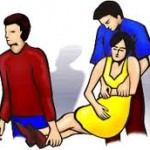Diabetic coma is a reversible form of coma that is associated with diabetes. It arises mainly as a consequence of diabetes that is left unchecked. There are three variants: ketoacidotic coma, hypoglycemic coma and hyperosmolar coma. The particular symptoms of the diabetic coma depend largely on the conditions that give rise to it, Better Health Channel explains. Treatment options for this condition will therefore vary for the same reasons.
 Before a diabetic coma, you’ll usually experience signs and symptoms of high blood sugar or low blood sugar.
Before a diabetic coma, you’ll usually experience signs and symptoms of high blood sugar or low blood sugar.
Early symptoms that may lead to diabetic coma if not treated include:
- Increased thirst
- Increased urination
- Weakness
- Drowsiness
- Altered mental state
- Headache
- Restlessness
- Inability to speak
- Paralysis
Symptoms of Ketoacidotic Coma
Ketoacidotic coma occurs mostly in patients with Type 1 diabetes, Diabetes.co.uk reports. It is caused by the build-up of ketones — by-products of fat breakdown — that cause the blood to become excessively acidic. When insulin is lacking, the body switches to using fat instead of glucose for energy, causing the ketone build-up. What causes ketoacidosis?
Here are three basic reasons for moderate or large amounts of ketones:
- Not enough insulin
Maybe you did not inject enough insulin. Or your body could need more insulin than usual because of illness. - Not enough food
When you’re sick, you often don’t feel like eating, sometimes resulting in high ketone levels. High levels may also occur when you miss a meal. - Insulin reaction (low blood glucose)
If testing shows high ketone levels in the morning, you may have had an insulin reaction while asleep.
Usually, this is brought about or worsened by an infection or missed insulin dosage.
Ketoacidosis usually develops slowly. But when vomiting occurs, this life-threatening condition can develop in a few hours. Early symptoms include the following:
- Thirst or a very dry mouth
- Frequent urination
- High blood glucose (sugar) levels
- High levels of ketones in the urine
Late symptoms include fatigue, lethargy, extreme thirst, nausea, confusion, difficulty in breathing, vomiting, stomach pain, frequent urination and fruity smell on the breath.
Symptoms of Hyperosmolar Coma
 High blood sugar (hyperglycemia)
High blood sugar (hyperglycemia)
If your blood sugar level is too high, you may experience:
- Increased thirst
- Frequent urination – The level of sugar causes the blood to change consistency and become thicker and syrupy. Excessive sugar in the blood causes the kidneys to try to remove it as a waste product. It does this through excessive urination. This can lead to dehydration which if prolonged can lead to unconsciousness and coma.
- Fatigue
- Nausea and vomiting
- Shortness of breath
- Stomach pain
- Fruity breath odor
- Fast heartbeat
This case can be due to the following three reasons. The first reason is due to forgotten insulin or diabetic medicines. The second reason is due to some infections like flu or pneumonia. These infections can lead to increase in the sugar levels of the body. The last possibility is that the diabetic person may have consumed a lot of sugar and glucose rich foods.
Symptoms of Hypoglycemia Coma
Low blood sugar (hypoglycemia)
If your blood sugar level is too low, you may feel:
- Shaky or nervous
- Tired
- Sweaty
- Hungry
- Nauseated
- Irritable
- An irregular or racing heartbeat
- Hostile or aggressive
- Confused
Some people develop a condition known as hypoglycemia unawareness and won’t have the warning signs that signal a drop in blood sugar.
The patient suffers from these symptoms because of overdose of insulin or diabetic medicines. Rigorous exercising may also lead to this state. Excessive alcoholism is another cause of diabetic coma.
If you experience any symptoms of high or low blood sugar, test your blood sugar and follow your diabetes treatment plan based on the test results. If you don’t start to feel better quickly, or you start to feel worse, call for emergency help. The difficulty with ALL of the diabetic coma symptoms above is that they can often simply be signs of the flu or other common sickness.
When to see a doctor
 A diabetic coma is a medical emergency. If you feel extreme high or low blood sugar symptoms and think you might pass out, call 911 or your local emergency number. If you’re with someone with diabetes who has passed out, call for emergency help, and be sure to let the emergency personnel know that the unconscious person has diabetes.
A diabetic coma is a medical emergency. If you feel extreme high or low blood sugar symptoms and think you might pass out, call 911 or your local emergency number. If you’re with someone with diabetes who has passed out, call for emergency help, and be sure to let the emergency personnel know that the unconscious person has diabetes.
Bottom Line
Developing a diabetic coma is an extreme condition. Nonetheless, it can and does occur. How do you reduce the odds of prevent it?
- Develop and Maintain a Self Management Plan: Stick with your meal and exercise plan. Take your medications.
- Avoid Bad Habits. Ease off the alcohol and illegal drugs.
- Inform Your Friends, Family and Co-workers of Symptoms.
- Monitor your Blood Glucose and Ketone Levels Frequently.
- Wear a Medical ID Bracelet.
As always, please speak with your health care provider about diabetic coma symptoms and your self-management plan.
